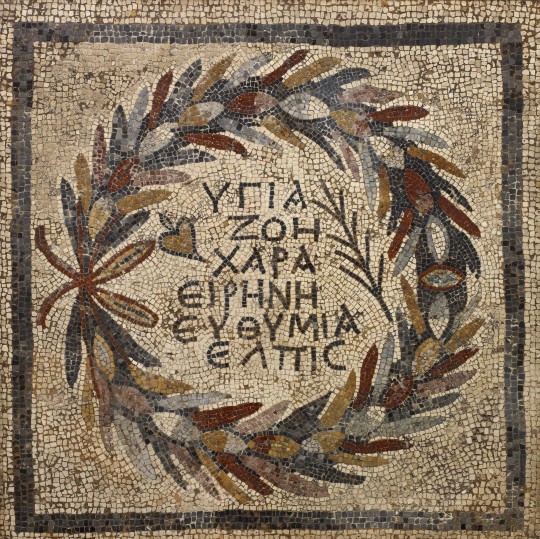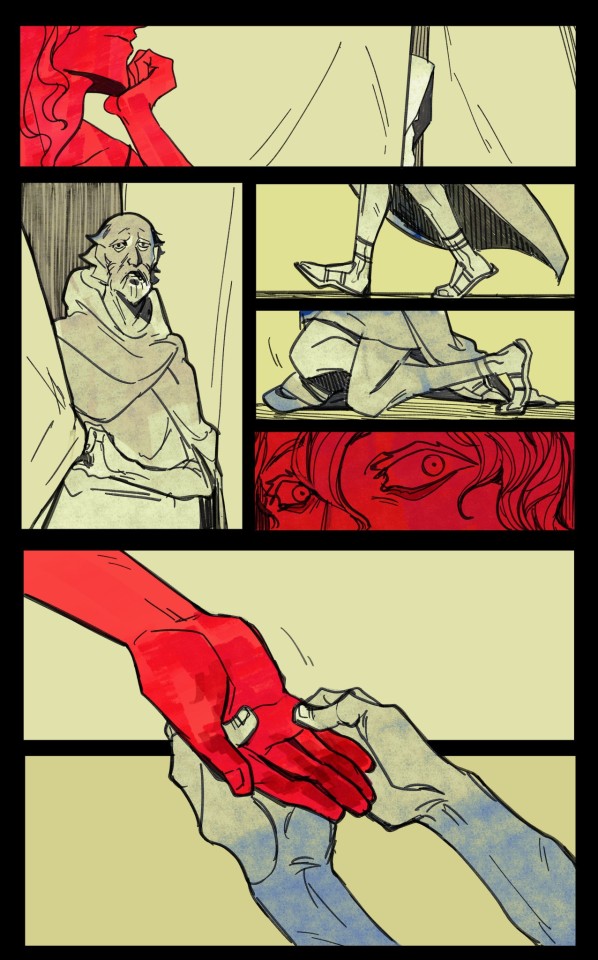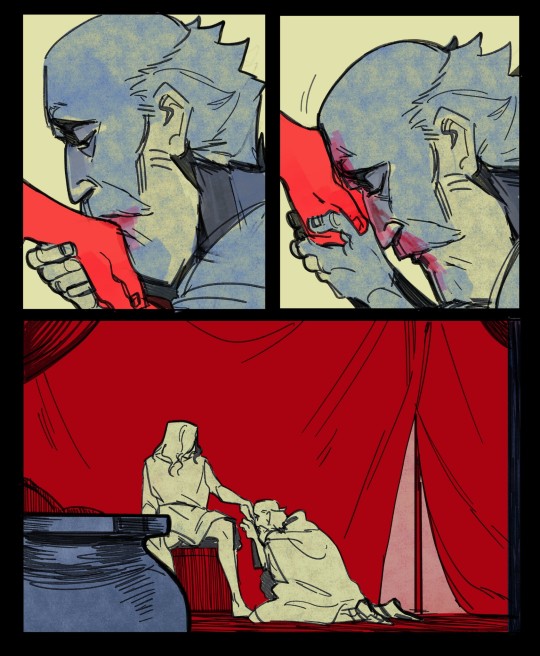Text
Huge shout to my friend from an undergraduate philosophy program who started working out every single day, not for health benefits or to become conventionally attractive or whatever, but because -- and this is a direct quote -- he was concerned that otherwise he might "become lost in the world of signs and forget the things they signify". I have thought about this every single time that I've worked out since.
#yk what i was planning to start going to the gym this semester for health#but i'm adding that to the list of reasons
51K notes
·
View notes
Text
i wake up thirsty and i think of palestine. i go to the doctor’s office and i think of palestine. a sign in the corner of the waiting room says ‘this is a place of healing, disruptive behavior will not be tolerated’ and i think of palestine. they probably weren’t thinking of bombs and snipers and mass graves in parking lots. i call my parents and i think of palestine. i drive to the grocery store and i think of palestine. i look at the clear blue sky and i think of palestine. i put the dishes away and i think of palestine. i feed my cat and i think of palestine. i listen to music and i think of palestine. i read poetry and i think of palestine. i text my friends and i think of palestine. i think of palestine and i think of palestine and i think of palestine
50K notes
·
View notes
Text

i think about this at least five times a day
#this is what plays through my head in the morning when my alarm goes off#sometimes it even works!#marcus aurelius#latinist tag#undescribed
6K notes
·
View notes
Text
Reblog to have the most homoerotic year of your life 2024
104K notes
·
View notes
Text

Late Roman stone mosaic from the Greek city of Halicarnassus, Caria (modern Bodrum, Turkey), dated 4th century AD, now in the British Museum. A coloured laurel wreath encloses a Greek inscription with the following words:
ΥΓΙΑ "Health"
ΖΟΗ "Life"
ΧΑΡΑ "Joy"
ΕΙΡΗΝΗ "Peace"
ΕΥΘΥΜΙΑ "Happiness"
ΕΛΠΙϹ "Hope"
🏛️: © The Trustees of the British Museum
1K notes
·
View notes
Text
sir gawain was but a beardless youth when he beheaded the green knight…. verily he shouldve been at the clubbe….
14K notes
·
View notes
Text

4K notes
·
View notes
Text

[image description: 'io saturnalia' in red glitter text]
#!!!!#io saturnalia! bibe vivas multis annis!#(i'm still within the time frame of celebrations okay we're good)#saturnalia#gif
655 notes
·
View notes
Text
149 notes
·
View notes
Text

what i truly love about the metamorphoses is THIS. in the line i underlined, minerva is stating she witnessed the birth of pegasus from medusa’s blood. this ‘corrects’ the tale perseus told, as a narrator, in the previous book: the hero talked about medusa and about his feat, but didn’t mention minerva. here minerva adds information the previous narrator had not included in his tale. this is one of the many windows on the unreliability of the narrators in the poem. extrapolating single episodes from the metamorphoses is essentially like falling into a trap because every narrator is partial and only tells their own, oriented version of the story. the sexiest labyrinth of lies ever
205 notes
·
View notes
Text

Oh and speaking of urius
22 notes
·
View notes
Text

Happy Saturnalia! Drink and live many years!
Saturnalia is an ancient Roman religious festival honoring Saturn, who was pardoned after his expulsion from Olympus by Jupiter and subsequently regarded as a benevolent god of agricultural abundance.
The first documented Saturnalia was held in 497 BCE for the dedication of the Temple of Saturn in Rome. An annual festival commemorating the dies natalis (anniversary) of this event was held thereafter on December 17. The celebration proved so popular that it was extended to three days, then to an entire week - from December 17 to 23. There was a 24 hour break to take care of home and business - and then everyone went back to celebrating with the dies natalis (anniversary) of the dedication of the temple of Sol Invictus on December 25!
The religious observation of Saturnalia occurred on the first day of the festival. The cult statue of Saturn was acrolithic, a composite of carved ivory over a wooden scaffold and saturated with olive oil to help prevent the ivory from cracking, and likely covered with fabric clothing. The legs of the statue were bound with woolen bands for most of the year - again, it is speculated, to help prevent the ivory from cracking, but perhaps there was also a deeper, religious meaning - were unbound for the Saturnalia. After a religious procession to the Temple of Saturn, followed by a ritual sacrifice, a lectisternium was held, in which a smaller statue of Saturn was placed upon a dining couch before which a banquet was held, attended by Roman elites. The general Saturnalia festival followed these solemnities.
The Saturnalia recalled the mythical Age of Saturn, when crops grew without human toil and humanity lived in harmony with nature and each other. Elements of the festival included days off from work, gatherings of family and friends, wearing brightly-colored garments, preparing and indulging in copious amounts of food and drink, playing games, attending theatrical and musical performances, giving gifts, decorating homes and businesses with garlands and wreaths of evergreens gleaming with sparkly ornaments, light from candles, lamps, torches, and bonfires - all of which probably sound at least a little familiar!
The reversal of normal societal roles was emblematic of Saturnalia: the emperor bestowed largess upon soldiers and the populace, employers gave bonuses to workers, families with the means to do so gave food and clothing the poor, owners served their slaves and the wealthy waited on their servants, children were allowed to attend theatrical performances and to gamble.
If you’re able to do so, I hope you will continue the Saturnalia tradition of gifts and role-reversals by supporting your local food bank, shelter, or the charity of your choice.
⊱•✹¸.•´*¨°`*•༻*°🏛°*༺•*`°¨*`•.¸✹•⊰
Image info:
“Io, Saturnalia!” (Io is pronounced ”ee-o” or “yo”) is the traditional greeting during this festival. “Bibe vivas multis annis” (“Drink and live many years”) was a popular toast, especially in late antiquity.
Info on the toast:
Bond, Sarah. Roman Gold Glass and the Epigraphy of Toasting in Antiquity:
https://sarahemilybond.com/2014/07/08/roman-gold-glass-and-the-epigraphy-of-toasting-in-antiquity/
Base image: Wall painting (fresco) of a banquet scene.
Photo: ArchaiOptix
Image source: https://commons.wikimedia.org/wiki/File:Wall_painting_-banquet_scene-Pompeii(V_2_4)_-_Napoli_MAN_120030.jpg
Image license: Creative Commons Attribution-Share Alike 4.0 International
Remix: I removed some partially visible images from the lower half of the painting, applied additional color to the blue border on the right side of the painting, and added the Saturnalia messages.
218 notes
·
View notes
Text

snoopy cookies
3K notes
·
View notes
Text
none of those words are in the epic of gilgamesh
#NONE OF THESE WORDS ARE IN THE EPIC OF GILGAMESH#kids these days don't even say sha naqba īmuru anymore. smh#gilgamesh
14K notes
·
View notes
Text


I have endured what no one on earth has ever done before
I put to my lips the hands of the man who killed my son.
14K notes
·
View notes
Photo

Panel 3. Psyche Discovers that Her Mysterious Lover is Eros, 1908, Maurice Denis
Medium: oil,canvas
https://www.wikiart.org/en/maurice-denis/psyche-discovers-that-her-mysterious-lover-is-eros-1908
891 notes
·
View notes